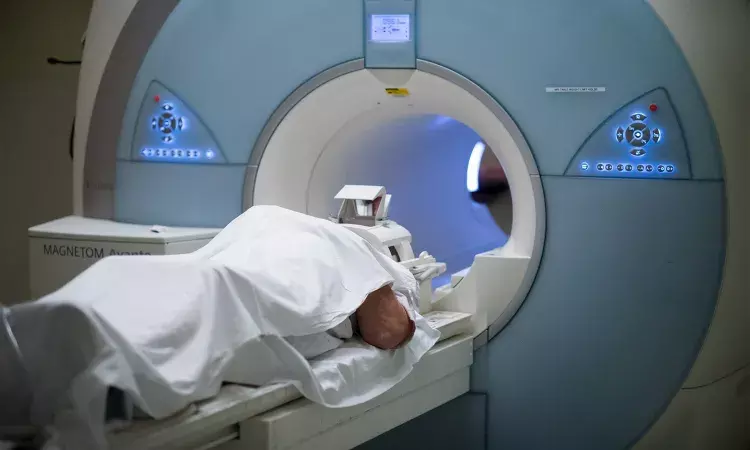- Home
- Medical news & Guidelines
- Anesthesiology
- Cardiology and CTVS
- Critical Care
- Dentistry
- Dermatology
- Diabetes and Endocrinology
- ENT
- Gastroenterology
- Medicine
- Nephrology
- Neurology
- Obstretics-Gynaecology
- Oncology
- Ophthalmology
- Orthopaedics
- Pediatrics-Neonatology
- Psychiatry
- Pulmonology
- Radiology
- Surgery
- Urology
- Laboratory Medicine
- Diet
- Nursing
- Paramedical
- Physiotherapy
- Health news
- Fact Check
- Bone Health Fact Check
- Brain Health Fact Check
- Cancer Related Fact Check
- Child Care Fact Check
- Dental and oral health fact check
- Diabetes and metabolic health fact check
- Diet and Nutrition Fact Check
- Eye and ENT Care Fact Check
- Fitness fact check
- Gut health fact check
- Heart health fact check
- Kidney health fact check
- Medical education fact check
- Men's health fact check
- Respiratory fact check
- Skin and hair care fact check
- Vaccine and Immunization fact check
- Women's health fact check
- AYUSH
- State News
- Andaman and Nicobar Islands
- Andhra Pradesh
- Arunachal Pradesh
- Assam
- Bihar
- Chandigarh
- Chattisgarh
- Dadra and Nagar Haveli
- Daman and Diu
- Delhi
- Goa
- Gujarat
- Haryana
- Himachal Pradesh
- Jammu & Kashmir
- Jharkhand
- Karnataka
- Kerala
- Ladakh
- Lakshadweep
- Madhya Pradesh
- Maharashtra
- Manipur
- Meghalaya
- Mizoram
- Nagaland
- Odisha
- Puducherry
- Punjab
- Rajasthan
- Sikkim
- Tamil Nadu
- Telangana
- Tripura
- Uttar Pradesh
- Uttrakhand
- West Bengal
- Medical Education
- Industry
Use of cardiac MRI, CT increases but is less compared to other heart imaging modalities: Study

USA: Cardiovascular CT and MRI use has been increasing and so is the number of radiologists providing these exams, finds a recent study in the journal Radiology: Cardiothoracic Imaging. Though they still make up a fraction of the number of cardiac exams being performed annually.
Both cardiovascular MRI and CT are used less frequently in comparison with other cardiovascular imaging modalities despite being increasingly available. James W. Goldfarb and Jonathan Weber from St Francis Hospital & Heart Center, Roslyn, NY, and colleagues aimed to assess the characteristics and trends of cardiovascular MRI and CT practitioners and practice in the US.
For the purpose, the researchers performed a retrospective cross-sectional analysis of 2012–2017 Medicare Part B physician payments from the Provider Utilization and Payment Data Physician and Other Supplier Public Use Files (POSPUF). They analyzed the characteristics of cardiovascular MRI and CT, including the number of providers and examinations, provider sex and location, and physician reimbursement. Variable means, standard deviations, and changes per year were reported and compared.
Key findings of the study include:
- In 2017, 582 physicians provided cardiovascular MRI services in 45 states, a 16.6% increase from 2016 and an 84.8% increase from 2012.
- A total of 1645 physicians provided cardiovascular CT services in 49 states, a 14.2% increase from 2016 and a 77.3% increase from 2012.
- Of the providers, 18.0% and 13.3% of cardiovascular MRI and CT providers were women, respectively, similar to providers' respective medical specialties.
- Only 1.0% of radiologists and 0.2% of cardiologists provided cardiovascular MRI services.
- A total of 3.2% of radiologists and 0.5% of cardiologists provided cardiovascular CT services.
- Both cardiovascular MRI use (+75.5%) and cardiovascular CT use (+97.4%) increased markedly over the 6-year study period.
Even though cardiovascular CT and MRI exams are a small segment of heart imaging, radiologists need to be prepared to offer them, Dr. Andrew Bierhals of the Mallinckrodt Institute of Radiology in St. Louis, wrote in an accompanying editorial.
"We as radiologists need to understand what these data are telling us about the future of cardiac CT and MRI -- there will be continued growth, and radiologists will be expected to provide these services," he wrote. "How does this impact the radiology profession? First and foremost, there will need to be enough radiologists to ensure timely care as these services are increasingly being demanded by referring physicians. Second, radiologists, including those in general practice, will need understanding and training in cardiac CT and MRI."
The study titled, "Trends in Cardiovascular MRI and CT in the U.S. Medicare Population from 2012 to 2017," is published in the journal Radiology: Cardiothoracic Imaging.
DOI: https://pubs.rsna.org/doi/10.1148/ryct.2021200112
Dr Kamal Kant Kohli-MBBS, DTCD- a chest specialist with more than 30 years of practice and a flair for writing clinical articles, Dr Kamal Kant Kohli joined Medical Dialogues as a Chief Editor of Medical News. Besides writing articles, as an editor, he proofreads and verifies all the medical content published on Medical Dialogues including those coming from journals, studies,medical conferences,guidelines etc. Email: drkohli@medicaldialogues.in. Contact no. 011-43720751


